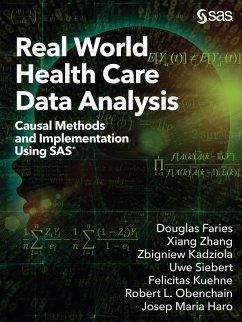Discover best practices for real world data research with SAS code and examples
Real world health care data is common and growing in use with sources such as observational studies, patient registries, electronic medical record databases, insurance healthcare claims databases, as well as data from pragmatic trials. This data serves as the basis for the growing use of real world evidence in medical decision-making. However, the data itself is not evidence. Analytical methods must be used to turn real world data into valid and meaningful evidence. Real World Health Care Data Analysis: Causal Methods and Implementation Using SAS brings together best practices for causal comparative effectiveness analyses based on real world data in a single location and provides SAS code and examples to make the analyses relatively easy and efficient.
The book focuses on analytic methods adjusted for time-independent confounding, which are useful when comparing the effect of different potential interventions on some outcome of interest when there is no randomization. These methods include:
Real world health care data is common and growing in use with sources such as observational studies, patient registries, electronic medical record databases, insurance healthcare claims databases, as well as data from pragmatic trials. This data serves as the basis for the growing use of real world evidence in medical decision-making. However, the data itself is not evidence. Analytical methods must be used to turn real world data into valid and meaningful evidence. Real World Health Care Data Analysis: Causal Methods and Implementation Using SAS brings together best practices for causal comparative effectiveness analyses based on real world data in a single location and provides SAS code and examples to make the analyses relatively easy and efficient.
The book focuses on analytic methods adjusted for time-independent confounding, which are useful when comparing the effect of different potential interventions on some outcome of interest when there is no randomization. These methods include:
- propensity score matching, stratification methods, weighting methods, regression methods, and approaches that combine and average across these methods
- methods for comparing two interventions as well as comparisons between three or more interventions
- algorithms for personalized medicine
- sensitivity analyses for unmeasured confounding
Dieser Download kann aus rechtlichen Gründen nur mit Rechnungsadresse in A, D ausgeliefert werden.


